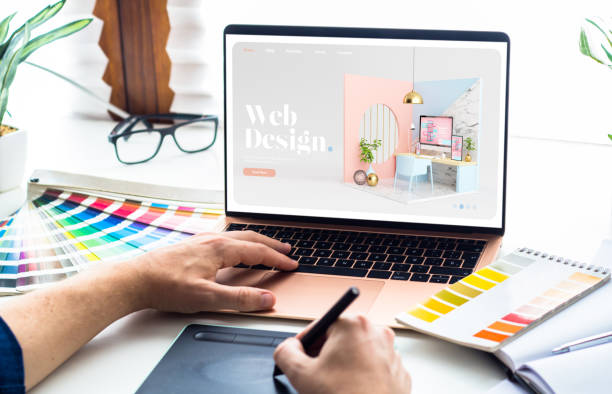The Ultimate Guide to Modern Web Site Style Trends
In the ever-evolving electronic landscape, contemporary website style patterns play an essential role fit individual experience and interaction. From the surge of minimalist style principles that focus on simplicity to the impact of bold typography in defining brand identity, each aspect adds to a natural on-line visibility. The emphasis on mobile-first and responsive methods, together with cutting-edge microinteractions, additionally enhances usability. Furthermore, the expanding concentrate on lasting website design techniques shows a dedication to ecological obligation. These patterns collectively increase important concerns about the future of efficient website design and what it suggests for companies and consumers alike.
Minimalist Layout Concepts
Minimalist style principles emphasize the idea that less is more, promoting for simpleness and capability in visual interaction. This technique remove unneeded elements, concentrating rather on important components that communicate the intended message properly. By prioritizing clarity, minimalist layout improves individual experience, allowing visitors to navigate internet sites easily.
Core tenets of minimal style consist of using adequate white space, which creates a sense of balance and organization. This unfavorable room not only directs the customer's interest to crucial elements however likewise promotes a soothing aesthetic environment. In addition, a limited color palette is frequently used, utilizing monochromatic schemes or soft tones to preserve visual cohesion and avoid overwhelming the user.
Typography plays a critical role in minimal layout, where legible font styles are selected for their simpleness and performance in connecting material. Pictures and graphics are made use of sparingly, making certain that they offer an objective as opposed to distract from the total message. Inevitably, minimalist design principles cultivate a focused setting that urges individuals to engage with the content, enhancing the total efficiency of contemporary web site design. This pattern shows a growing appreciation for thoughtful, user-centric looks in electronic areas.
Strong Typography Selections
Welcoming vibrant typography selections has ended up being a defining quality of modern-day internet site design, as it efficiently catches focus and shares solid messaging. Developers are increasingly using typography not merely as a practical element yet as a key aesthetic component that boosts the general visual and customer experience.

Furthermore, the association of strong typography with minimalist style concepts permits striking contrasts, improving readability while keeping visual appeal. Making use of whitespace around strong message additionally highlights its importance, making certain that the message reverberates with the audience.
As electronic landscapes become more competitive, leveraging strong typography enables brand names to distinguish themselves and leave a lasting perception. The cautious selection of font styles and their application can evoke emotions, develop tone, and drive action, making vibrant typography an indispensable tool in modern-day site design. Eventually, it is an effective means to boost narration and guarantee that key messages are not just seen but additionally really felt.
Responsive and Mobile-first Style
Mobile-first and receptive layout has emerged as a vital concept in contemporary website advancement, mirroring the raising dependence on smart phones for accessing online web content. As individual actions changes in the direction of mobile surfing, developers must focus on creating experiences that adapt perfectly across various screen dimensions and resolutions.
A responsive design makes certain that an internet site instantly changes its layout, images, and functionality based on the tool being utilized. Mobile-first layout advocates for creating sites at first for smaller displays, ultimately scaling up to bigger displays.
Applying responsive and mobile-first concepts not only satisfies individual choices however likewise aligns with seo (SEARCH ENGINE OPTIMIZATION) methods. Significant search engines, like Google, focus on mobile-friendly websites in their rankings, making it imperative for services to take on these style techniques. In a competitive digital landscape, embracing responsive and mobile-first design is not simply an alternative; it is crucial for making sure availability and involvement with a varied target market.
Engaging Microinteractions
Microinteractions play a pivotal function in boosting customer interaction and general website experience, especially in the context of mobile-first and receptive layout. These subtle design components this provide instant feedback to customers, making communications much more intuitive and delightful. Instances include button animations, notification alerts, and loading indicators, which not just guide users but also produce a feeling of link with the user interface.
Incorporating appealing microinteractions can substantially enhance use by lowering cognitive load. When customers obtain aesthetic or auditory responses upon performing activities, such as clicking a switch or sending a form, they really feel More Bonuses a lot more positive in their options. This fosters a smoother navigating experience, inevitably raising individual retention.

As web site style patterns proceed to advance, the importance of microinteractions can not be overemphasized. They work as the subtle yet powerful touchpoints that change normal interactions into extraordinary experiences, therefore elevating the general effectiveness of modern website design.
Lasting Website Design Practices
Sustainable web style methods are coming to be increasingly essential as the electronic landscape expands and ecological worries rise. Developers and designers are recognizing their obligation to produce websites that not just serve user requirements but additionally decrease environmental influence. This method encompasses numerous essential approaches.
Firstly, maximizing energy intake is critical. Internet sites must be developed to fill quickly and successfully, which decreases server power usage and boosts customer experience. Techniques such as picture compression, minimizing HTTP demands, and making use of contemporary coding techniques contribute dramatically to this goal.
Second of all, choosing eco-friendly hosting carriers is important - website design. Several holding firms are now powered by renewable resource resources, enabling sites to run in a much more lasting fashion. This selection shows a dedication to decreasing carbon footprints
In addition, adopting a minimal design can improve sustainability. Less aspects on a web page bring about much less data transfer, which not only quickens packing times but likewise preserves sources.
Last but not least, promoting digital access guarantees that web sites get to a bigger target market without unneeded bloat, aligning customer experience with ecological responsibility. By integrating these lasting practices, internet developers can add favorably to both individual interaction and the earth's wellness.
Verdict
In recap, modern website design trends highlight the integration of minimal concepts, bold typography, and responsive design to boost individual experience. Embracing these patterns is important for creating impactful digital experiences that reverberate with individuals in an increasingly competitive online landscape.
In the page ever-evolving electronic landscape, modern web site style trends play a vital duty in forming user experience and involvement. By focusing on clarity, minimal layout improves individual experience, allowing site visitors to browse websites easily.
Ultimately, minimal style concepts cultivate a focused atmosphere that encourages customers to involve with the web content, improving the overall effectiveness of contemporary site design.Microinteractions play a pivotal role in improving individual involvement and total website experience, particularly in the context of receptive and mobile-first layout.In summary, modern web site style trends highlight the assimilation of minimalist concepts, vibrant typography, and receptive design to boost user experience.